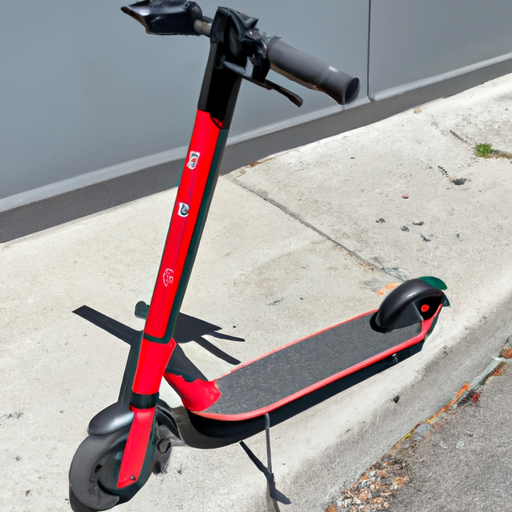Are you someone who loves the convenience and eco-friendliness of electric scooters? Have you ever wondered if these modern modes of transportation come equipped with built-in GPS or navigation features? In this article, we will explore the fascinating world of electric scooters and uncover whether or not these sleek machines have the added benefit of keeping you on the right track. So, sit back, relax, and join us on this informative journey to find out if electric scooters have the guidance systems we so often rely on.
Do Electric Scooters Have Built-in GPS Or Navigation Features?
Understanding the Capabilities of Electric Scooters
Electric scooters have become increasingly popular as a convenient and environmentally friendly mode of transportation. With their compact size and electric motors, scooters provide a practical solution for short commutes and leisure rides. However, one question that often arises is whether electric scooters are equipped with built-in GPS or navigation features. In this article, we will delve into this topic and explore the various capabilities of electric scooters when it comes to GPS and navigation.
Built-in GPS: A Game Changer?
The concept of built-in GPS in electric scooters might sound intriguing, as it can offer a range of benefits. Imagine effortlessly navigating through unfamiliar streets, avoiding traffic congestion, and finding the most efficient routes. With GPS technology integrated into the scooter’s system, these features become a reality. However, it’s important to note that not all electric scooters come equipped with built-in GPS.
The Availability of Built-in GPS
While some high-end electric scooter models do come with built-in GPS, it is not a standard feature across the board. The inclusion of GPS largely depends on the brand, model, and intended use of the scooter. Manufacturers who prioritize advanced features and cater to the tech-savvy audience often offer built-in GPS as a premium option. On the other hand, budget-friendly models typically forgo this feature to maintain affordability.
Alternative Solutions: Smartphone Connectivity
Even if your electric scooter does not have built-in GPS, there are alternative solutions readily available. Many scooter models support smartphone connectivity, allowing riders to utilize navigation applications for directions. By connecting your smartphone to the scooter’s interface, you can access popular navigation apps such as Google Maps or Waze. This integration not only provides turn-by-turn directions but also displays the route on your scooter’s display panel, ensuring ease of use and maximum safety.
Benefits of Smartphone Integration
The integration of smartphones and electric scooters brings numerous advantages. Firstly, it allows you to utilize the navigation features of your smartphone, leveraging the extensive mapping databases and real-time traffic updates provided by popular apps. Additionally, smartphone integration often offers voice-guided navigation, reducing the need for constant visual checking while riding. Furthermore, this setup ensures that you can always stay updated with the latest map updates and improvements, as app developers continuously work on enhancing their navigation systems.
Factors to Consider
When considering electric scooters for purchase, it is vital to evaluate your personal navigation needs. If you heavily rely on navigation features and prefer a seamless riding experience, investing in a model with built-in GPS might be a worthwhile option. On the other hand, if you are comfortable using your smartphone for navigation and prefer to save on costs, a scooter with smartphone integration could be the ideal choice.
Additional Considerations: Battery Life and Data Usage
While built-in GPS and smartphone integration offer valuable navigation capabilities, it is essential to consider the impact on battery life and potential data usage. Utilizing GPS functionality, particularly when connected to a smartphone, can consume a significant amount of battery power. Therefore, it is crucial to ensure that your electric scooter has a battery with sufficient capacity to handle navigation tasks without compromising overall performance. Similarly, if you use your smartphone’s data for navigation purposes, it is crucial to monitor your data usage and have an appropriate data plan to avoid any unexpected additional costs.
The Future of Electric Scooter Navigation
As technology continues to advance, the landscape of electric scooter navigation is likely to evolve further. Manufacturers might increasingly incorporate built-in GPS into their scooter models, making it a standard feature across various price ranges. Additionally, we can anticipate the development of specialized navigation apps tailored specifically for electric scooter riders, offering enhanced features and a user-friendly interface. With ongoing innovation in this field, the future looks promising for those seeking comprehensive navigation solutions for their electric scooters.
Conclusion
In conclusion, not all electric scooters have built-in GPS or navigation features. However, with smartphone integration capabilities, riders can still enjoy the benefits of navigation apps such as Google Maps or Waze. By assessing your specific navigation needs and considering factors like battery life and data usage, you can make an informed decision when choosing an electric scooter. Whether you opt for a scooter with built-in GPS or prefer smartphone integration, electric scooters provide a versatile and convenient means of transportation for urban dwellers and recreational riders alike. So hop on your scooter and enjoy the journey with confidence, knowing that you have the navigation tools to guide you along the way.

